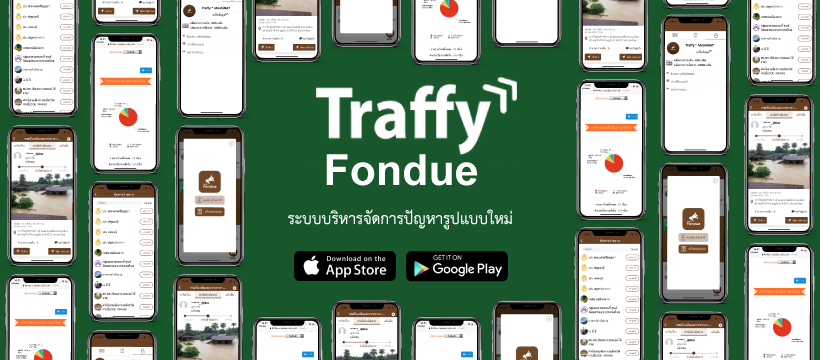
Southeast Asia has been fertile ground for the rise of the platform economy. Like platforms elsewhere, Southeast Asian platform firms (i.e Grab, Lazada, Shopee) have transformed life, economies, labor structures, and urban space in the region. There has been relatively less attention paid to a more recent and equally important aspect of “platformization”—the rise of “platform governance.” Ansell and Miura (2020) define platform governance as “an institution that strategically deploys its architecture to leverage, catalyze, and harness distributed social action for the purpose of achieving certain governance objectives.” 1 The adoption and transmutation of the platform concept by local political actors in Thailand is unfolding within a unique institutional and political context. At the national level, Thailand was under a military-led coalition since the 2014 coup until recently 2. Local mayors, however, are elected and thus must cultivate popular support to win elections. Once in power, mayors are hampered by a centralized fiscal system in which provincial governors (puwa) are appointed by the Ministry of Interior and local budgets are constrained. In 2022, the Bangkok Metropolitan Administration (BMA), the provincial-level body governing the capital, received 81% of its budget by central transfers 3. In this context, digital platforms have been embraced as one way to “do more with less”: platforms offer both real and discursive power for local officials, as a way to communicate with constituents and allocate scarce resources in cities.
Thailand 4.0: Upgrading Thailand into the digital era?
In 2016, two years after the 2014 coup, the military-backed government of General Prayuth Chan-Ocha unveiled one of its signature policies “Thailand 4.0” which aimed to digitally transform Thailand and push the country out of the “middle-income trap”. The 12th 5 year National Economic and Social Development Plan of 2017 emphasized the Thailand 4.0 concept, which included plans digitizing government and promoting frontier “S-Curve” Industries. In 2016, a renamed Ministry of Digital Economy and Society (MODES) was set up and the “Digital Economy Promotion Agency” was given a mandate to promote “smart cities”, or meuang achariya in Thai. While DEPA helped popularize the smart city concept, they are one agency among many state and non-state actors promoting digital platforms and applications for urban governance. Within Thailand’s centralized fiscal system, digital platforms have appealed to entrepreneurial local officials as a tool to leverage scarce budgets and build electoral legitimacy. In this article, I explore how platform governance has been operationalized by two politicians: one is Chadchart Sittipunt, who in a landslide victory in 2022 was the first elected Governor of Bangkok since the military coup of 2014. The other is Dr. Kanop Ketchart, Mayor of the small southern city of Nakhon Si Thammarat.
Bangkok: Chadchart and Traffy Fondue

In 2022, Chadchart Sittipunt swept all of Bangkok’s districts in his successful campaign for governor. Running as an independent (though he previously served as transport minister in the previous Pheu Thai government), Chadchart presented himself as a technocrat solving the Thai capital’s urban problems through technology and citizen engagement. As he reflected, “our task is to restore trust and confidence in the democratic system, in the last 10 years people lose faith, many people feel like the system is corrupt, our job is to bring trust back” 4. During his campaign, Chadchart’s team released over 200 policies, but one of his core concepts is solving what he calls “capillary problems”. Bangkok has decent large-scale transport infrastructure like the BTS Skytrain, for example, but neighborhood-level soi alleys and informal communities have been neglected.
One of Chadchart’s signature efforts has the been the deployment of a citizen complaint platform called Traffy Fondue. Chadchart did not develop Traffy, but promoted it using his prominence as Bangkok Governor. As Chadchart told me, “we need a quick win, and I think Traffy is a quick win.” 5 As of August 2023, Traffy has generated 407,000 citizen reports, with 299,000 (over 70%) of them marked as “responded to” by various government agencies. The simple platform, which can be used both via a chatbot channel on the popular Line messaging app or a standalone app, allows citizens to report a problem in their neighborhood such as a pothole or downed electric wires, and then the relevant government agency or district office must respond or send a team to fix it. The application has its roots in a 2018 project to automate waste collection in Phuket, part of DEPA’s smart city pilot project in Phuket that began in 2015. The development of Traffy was led by Dr. Wasan Pattara-atikom of the National Electronic Technology Center (NECTEC), a division of national science agency NSTDA. Procurement costs were low because it was already developed by a national agency.

The logic of the platform, originating as a commercial business model, has been adopted as a governing model. As Dr. Wasan says “Traffy Fondue works no different from Grab or other online markets that brings service providers and people who want to use services together.” 6 Chadchart adds, “platforms have four important qualities—no gatekeepers, everyone is equal, no friction, and it can scale fast,” he says. “I don’t have to order anything, the people responsible come to the platform and solve the problems, and report back if the problem is fixed. He also points to the platform as a tool to build trust. “When you treat people fairly, they trust. Traffy Fondue improves trust to the people.” 7
The BMA cannot directly respond to all complaints reported on the platform, but the system does provide data and visibility into how districts and departments are responding to problems submitted by citizens. A dashboard map shows where and what type of complaints have been submitted, generating useful data on the city and its “capillary problems”. In this way, Traffy also becomes a way for the BMA to help monitor of efficacy of local district leaders—Bangkok is itself divided into 50 districts, or khet. 8 The BMA holds workshops from districts with higher efficiency to share their experience. The application is now being promoted to other agencies and has been used in 1300 municipalities and 14 provinces across Thailand 9. There are plans to add new functions and analytic capacities, such as AI, to further automate problem handling.
Despite the success of Traffy, there is skepticism about Chadchart’s ability to bring about major change due to the entrenched bureaucracy and the relative limits of the BMA’s fiscal autonomy. 10 Many of Bangkok’s infrastructures are not under direct control of the BMA—for example electricity is managed by MEA, a separate agency; arterial roads are managed by The Ministry of Interior. Large-scale infrastructure projects such as a system of massive underground floodwater diversion tunnels are beyond the scope of the short-term fixes addressed on Traffy. As much as he has promoted Traffy, Chadchart himself was candid about risks of relying on digital platforms, warning they “might create some inequalities—some people don’t have access to platforms.” He suggested the need for more face-to-face community meetings to reach other constituencies.

Nakhon Si Thammarat: Smart City on Line
Nakhon Si Thammarat (NST) is an ancient city in southern Thailand known for its Buddhist temples and schools and used to be a historic center in the region. The population of the municipality is around 100,000, while the province has around 1.5 million residents. The current Mayor of the municipality, Dr. Kanop Ketchart, has overseen a set of initiatives to turn NST into what he calls a “human-centric smart city”, promoting technology in local schools and using a citizen engagement platform “My City”. A small Thai startup called Siam Inno City developed a “smart city platform on Line”, using the open API of the Japan-based messaging app Line that is commonly used in Thailand and Taiwan. While similar to Traffy Fondue, the interface was modeled on a Line-based app in Fukuoka, Japan 11. The @nakhoncity app was developed through a partnership between the municipality and Siam Inno City, with assistance from DEPA to obtain national-level funding and promote the model in Thailand and abroad. The core interface of the platform is a Line channel @Nakhoncity, which anyone with a Line account can register and follow. “In Thailand, many follow a Line Official Account because you get notified about new information. There’s more value added to it than building a standalone app you have to download”, according to Dr. Non Arkaraprasertkul, an expert with DEPA. Mayor Kanop initially sought to develop a platform for an early warning system to notify citizens about flooding if water levels rose in certain upstream reservoirs, monitored by sensors. Functions were gradually added to include a citizen complaint platform and an open platform allowing citizens to view live feeds of CCTV cameras. Data aggregated from citizen reports is displayed in a dashboard interface with maps showing the location of complaints, and summary data is generated for city officials.

The Mayor describes how the platform reflects his modest philosophy of governance, whereby “I am not a leader—they put me in a position so I can allocate the resources. I follow the people. Whatever they want it’s the right thing to benefit them I just follow… like a flock of birds, that fly together, the strong bird in front weak one in back.” 12 According to the Mayor’s office, 44,000 or 40% of the citizens are using the channel. The mayor mentioned the need to solve problems raised by citizens, in the first 48 hours after a complaint is filed. “If the problem is not fixed, you are the last bucket. It stops at the mayor. People elect you so you do what you have to, even going with a truck to clean it myself.” According to the Mayor’s office, the platform saved 10 million baht in operations ($275,000), not insignificant for a small city in Thailand. There are ongoing efforts to expand the MyCity app to Japan and Taiwan, where Line is also the dominant communication platform.
Conclusions
This article shows how the “platform” concept has been appropriated and deployed by political actors within Thailand as both a discursive tool for burnishing electoral credibility and also for solving actual urban problems. It may be too early to tell how effective such platforms are in the absence of deeper institutional reforms. Funds for urban infrastructure remain limited, particularly in secondary cities outside Bangkok. The Move Forward Party (MFP), which recently garnered the most votes in the May 2023 general election but was blocked from taking power by the Junta-appointed Senate, has advocated for decentralization reforms in their campaign. They received wide support across the country, particularly from cities and young people. The platform as it has currently been deployed by mayors in Thailand suggests a popular hunger for politicians to solve urban problems. As Chadchart reflects, “People may have become more powerful than before now that they have a platform to express their opinion.” The larger question going forward is whether “platform governance” in Thailand will catalyze political or institutional reforms and urban improvements, or will it merely be used as technocratic window dressing to forestall greater institutional and political reforms?
Andrew Stokols
PhD Candidate, MIT Department of Urban Studies and Planning
Notes:
- Ansell, Christopher, and Satoshi Miura. 2020. “Can the Power of Platforms Be Harnessed for Governance?” Public Administration 98 (1): 261–76 ↩
- While the 2023 elections unseated the ruling coalition of General Prayut, the military remains a important player in politics ↩
- https://www.bangkokpost.com/opinion/opinion/2336748/city-hall-needs-a-much-larger-budget ↩
- Chadchart Sittipunt, 2023 presentation to the Thai students association at Harvard Graduate School of Design ↩
- Interview with Chadchart Sittipunt, August 25, 2023 ↩
- https://adaymagazine.com/traffy-fondue/ ↩
- Chadchart Interview, Aug 25, 2023 ↩
- The 1972 Bangkok Metropolitan Area reform made Bangkok a special administration area equivalent to a province, divided into 50 districts khet and 180 subdistricts khwaeng ↩
- https://www.nationthailand.com/thailand/general/40031089 ↩
- The budget of the BMA in 2023 was around 80 Mn THB ↩
- Interview with Siam Inno City Founder Pornchai Leamsuksai ↩
- Quotes from Mayor Kanop are from a February 2023 visit by the author to Nakhon Si Thammarat ↩
